SPEC CPU2000 Memory Footprint
Click to skip directly to the results:
![]() table
table
![]() graphs
graphs
Introduction
The SPEC CPU2000 benchmarks are intended to exercise the CPU itself, the memory hierarcy, and the compilers. How much memory do they actually use?
The data collected here show that SPEC met its goals for memory footprint: most benchmarks are larger than common cache sizes, many are larger than 100MB, and none are larger than 200MB.
- It is useful to have benchmarks that are larger than common caches, because SPEC would like to differentiate its benchmarks from "toy benchmarks" that are too easy to run or that simply reflect MHz.
- It is useful to keep the benchmarks under 200MB so that the suite leaves a reasonable margin on a 256MB machine. The other 56MB are available for the operating system, graphics system, network daemons, etc, without using 'single user mode' on Unix systems, or killing processes on NT systems. (Such measures may not be representative of how most people use their systems.)
The SPEC CPU2000 benchmarks are derived from real applications, and they exercise more of the system than just the CPU chip.
Testbed and methods
Benchmark sizes were measured using:
- The hardware and software from the submission of the Compaq AlphaServer 4100 5/533 - see http://www.spec.org/cpu2000/results/res1999q4/cpu2000-19991130-00015.asc http://www.spec.org/cpu2000/results/res1999q4/cpu2000-19991130-00014.asc
- SPEC CPU2000 Kit 92 (the kit used in the submission)
- The tuning from the submission, except that -non_shared was added. This was added because a related set of experiments needed non_shared linking in order to include library effects (e.g. libc and libm). It is likely that the actual submission images consumed about the same physical memory as the images reported here; and slightly MORE virtual memory, since they mapped all of libc and libm, not just the portions actually needed by the benchmarks.
Resident size (rsz) and virtual size (vsz) were
collected using
ps -o
rsz,vsz,command
in a loop with a sleep of 5 seconds between each observation.
Results in table form
In the table that follows, the column num obs indicates the total number of observations, so that number times 5 should roughly equal the times reported at www.spec.org (see above for the exact URLs). The column num unchanged indicates the number of observations that reported the same value prior to the conclusion of the benchmark. Thus a zero in that column indicates that the last observation was different from the second last. The final column contains the word "stable" if the number unchanged is at least 90% of the number of observations; it is intended to indicate a benchmark that grows quickly to its target size and then stays there.
All observations on this web page are expressed in megabytes.
max max num num
rsz vsz obs unchanged stable?
----- ----- --- --------- -------
gzip 180.0 199.0 181 68
vpr 50.0 53.6 151 6
gcc 154.0 156.0 134 0
mcf 190.0 190.0 232 230 stable
crafty 2.0 2.6 107 106 stable
parser 37.0 66.8 263 254 stable
eon 0.6 1.5 130 0
perlbmk 146.0 158.0 186 0
gap 192.0 194.0 149 148 stable
vortex 72.0 79.4 162 0
bzip2 185.0 199.0 153 6
twolf 3.4 4.0 273 0
wupwise 176.0 177.0 185 181 stable
swim 191.0 192.0 322 320 stable
mgrid 56.0 56.7 281 279 stable
applu 181.0 191.0 371 369 stable
mesa 9.4 23.1 132 131 stable
galgel 63.0 155.0 287 59
art 3.7 4.3 157 37
equake 49.0 49.4 218 216 stable
facerec 16.0 18.5 182 173 stable
ammp 26.0 28.4 277 269 stable
lucas 142.0 143.0 181 179 stable
fma3d 103.0 105.0 268 249 stable
sixtrack 26.0 59.8 148 141 stable
apsi 191.0 192.0 271 270 stable
Results in graphic form
The following benchmarks grow quickly to their target sizes (expressed in megabytes) and then stay there:
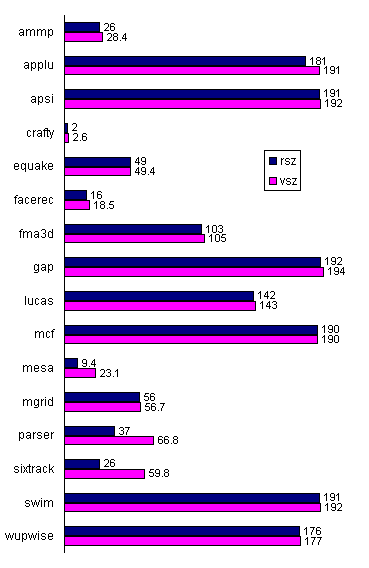
The following benchmarks change size over time:

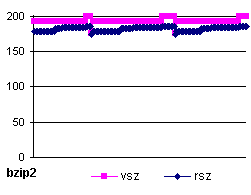
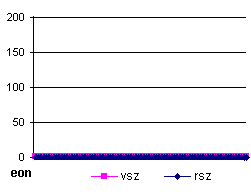
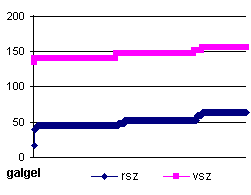
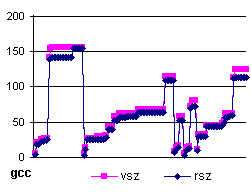
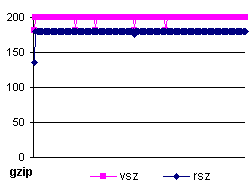
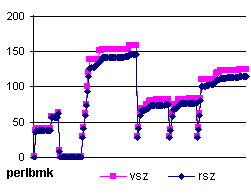
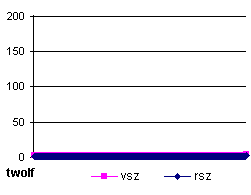
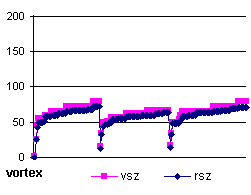
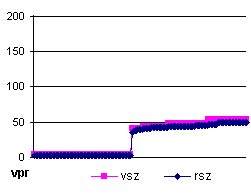
The following benchmarks are shown rescaled:
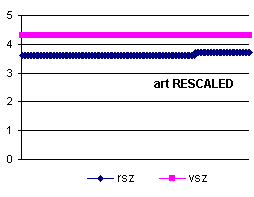
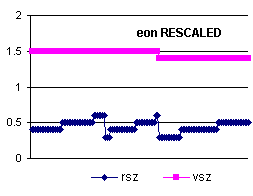
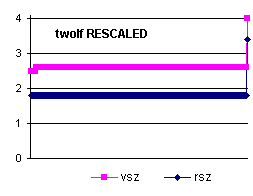
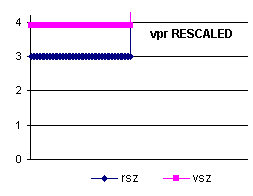
This page was last updated 29-Aug-2001 3:04 PM.
The results on this page were generated in late 1999 and early 2000 and have been previously presented at SPEC and ACM seminars. At that time, the author worked for Compaq Computer Corporation, whose permission is gratefully acknowledged for the re-publication at the SPEC web site.
The author can be reached at j.henning@computer.org.
